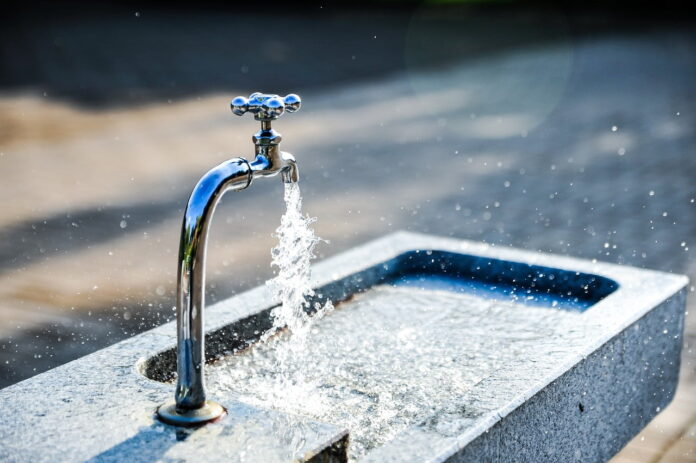Water is the lifeblood of our planet, a critical resource that sustains all forms of life. Yet, it is often taken for granted, especially in regions with seemingly abundant supplies. However, the reality is that fresh water is a finite resource, with less than 1% of the world’s water available for human use. The need for water conservation is becoming increasingly urgent due to factors such as population growth, climate change, and environmental degradation.
At the household level, saving water can have a significant impact. Not only does it help in preserving this precious resource, but it also reduces the energy required to process and deliver water, which in turn lowers greenhouse gas emissions. Conserving water can lead to substantial savings on utility bills. Every drop counts, and by implementing simple water-saving measures at home, individuals can play a crucial role in the broader effort to safeguard our water supply for future generations.
Fixing Leaks: The First Step in Reducing Household Water Waste
One of the most straightforward and effective ways to reduce water waste at home is by fixing leaks. A single dripping faucet can waste hundreds of gallons of water a year, and a leaking toilet can waste even more. Regularly checking for and repairing leaks in pipes, faucets, and appliances is essential.
Homeowners should be vigilant, listening for running toilets and monitoring their water bills for unexplained increases in usage. Simple fixes like replacing worn washers or toilet flappers can often remedy leaks. For more significant issues, it may be necessary to call a professional plumber. By addressing leaks promptly, households can prevent water waste and save money in the long run.
Smart Bathroom Habits: Showers, Toilets, and Taps
The bathroom is a hotspot for water consumption, but it’s also an area where smart habits can lead to significant savings. Taking shorter showers and installing low-flow showerheads can drastically reduce water use. For example, a standard showerhead may use 2.5 gallons of water per minute, while a low-flow model uses 1.5 gallons or less without sacrificing performance.
Toilets are another major water user. Older toilets can use up to 6 gallons per flush, while modern, high-efficiency toilets use as little as 1.28 gallons. If replacing a toilet isn’t feasible, a toilet tank bank or a fill cycle diverter can help reduce the amount of water used per flush. Additionally, turning off the tap while brushing teeth or shaving can save gallons of water each day.
Efficient Water Use in the Kitchen: Dishwashing and Cooking Tips
The kitchen offers numerous opportunities for water conservation. When washing dishes by hand, it’s more efficient to fill the sink with water rather than letting the tap run continuously. For those with dishwashers, it’s important to run full loads and choose the appropriate water-saving settings.
Cooking also presents chances to save water. Steaming vegetables instead of boiling them not only conserves water but also preserves nutrients. When cleaning fruits and vegetables, filling a basin with water rather than running the tap can make a big difference. Additionally, using the minimal amount of water required to cook pasta or rice can lead to savings over time.
Landscaping and Gardening: Outdoor Water Savings Strategies
Outdoor water use can account for a significant portion of a household’s consumption, particularly in warmer climates. However, there are many strategies to maintain a beautiful landscape while minimizing water use. Choosing native plants that are adapted to the local climate can reduce the need for irrigation. When watering is necessary, doing so early in the morning or late in the evening can reduce evaporation losses.
Drip irrigation systems target water directly to the plant’s roots, which increases efficiency and reduces waste. Collecting rainwater in barrels for garden use is another excellent way to conserve. Additionally, mulching around plants helps retain soil moisture, reducing the need for frequent watering.
Upgrading to Water-Efficient Appliances and Fixtures
Investing in water-efficient appliances and fixtures is a powerful way to reduce household water consumption. WaterSense-labeled products meet the Environmental Protection Agency’s (EPA) specifications for water efficiency and performance. Replacing old, inefficient appliances with these can lead to significant savings.
For instance, an Energy Star-certified dishwasher uses less than half the water of washing dishes by hand. Similarly, a high-efficiency washing machine can save thousands of gallons of water per year compared to older models. Upgrading to water-efficient fixtures like faucets and showerheads can also make a big difference without sacrificing performance or convenience.
Saving water at home is a collective responsibility that yields both environmental and economic benefits. By taking proactive steps such as fixing leaks, adopting smart bathroom and kitchen habits, optimizing outdoor water use, and upgrading to efficient appliances, individuals can contribute significantly to water conservation efforts. Each action may seem small on its own, but together, they can lead to substantial reductions in water consumption. As stewards of this vital resource, it is up to each of us to implement these practical tips and ensure a sustainable water future for all.
